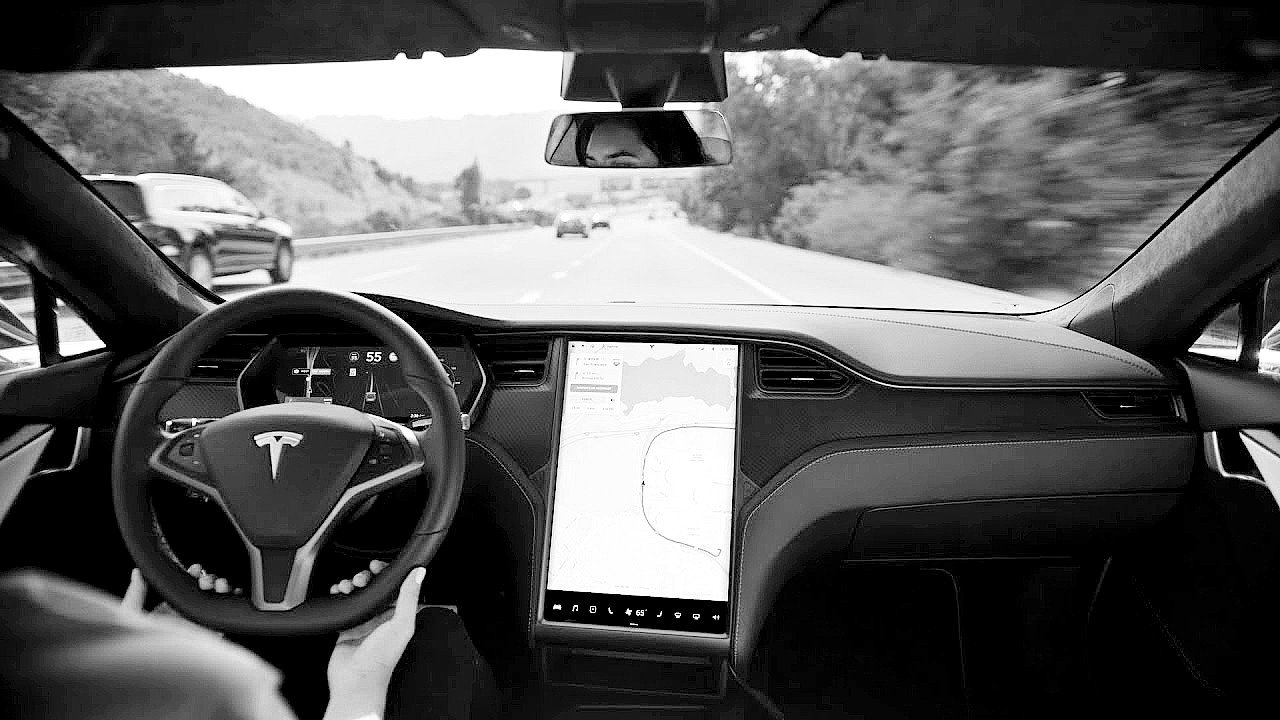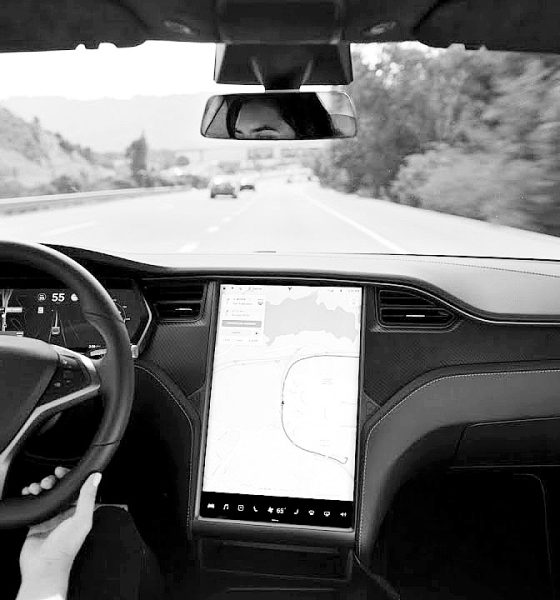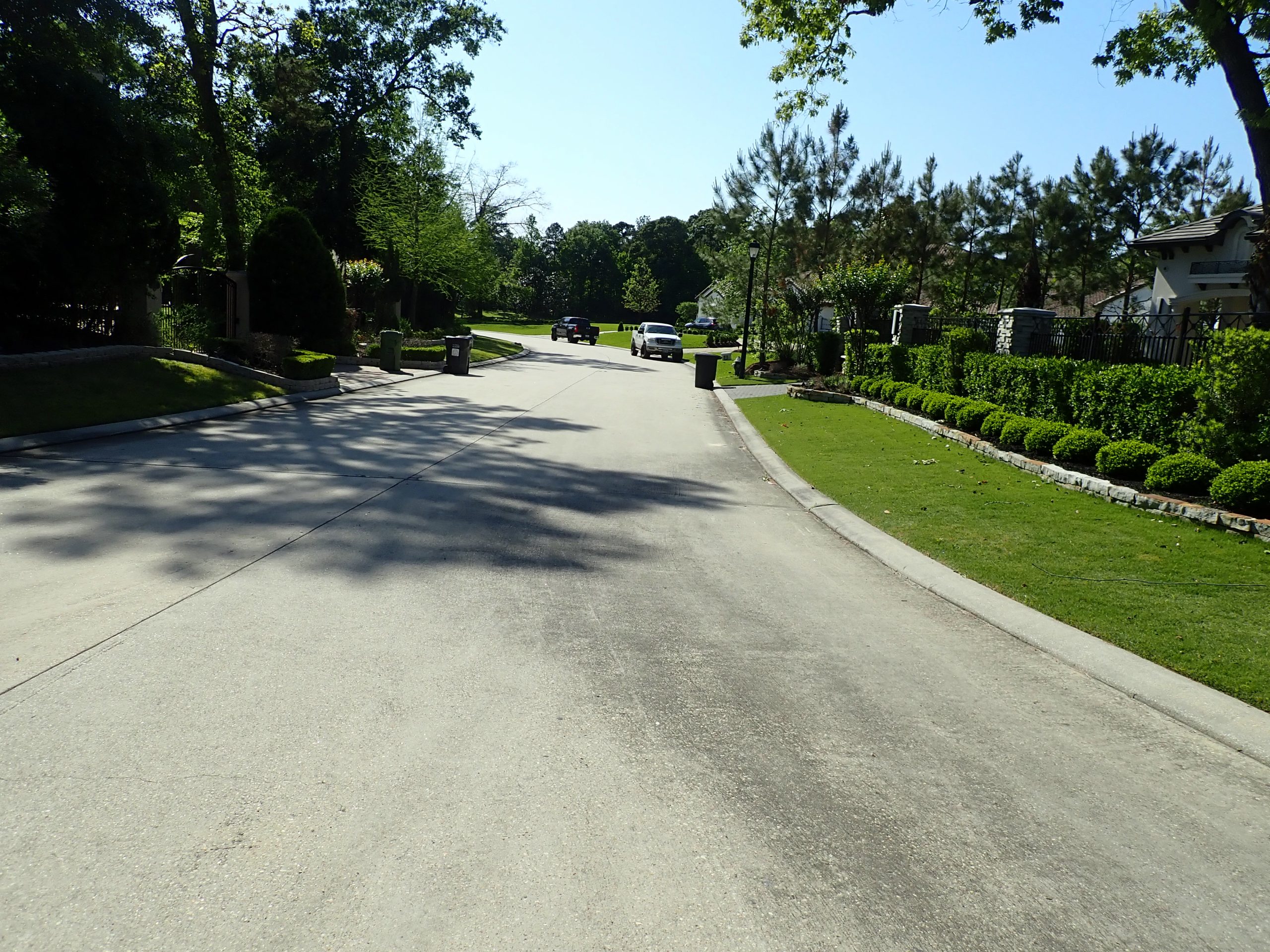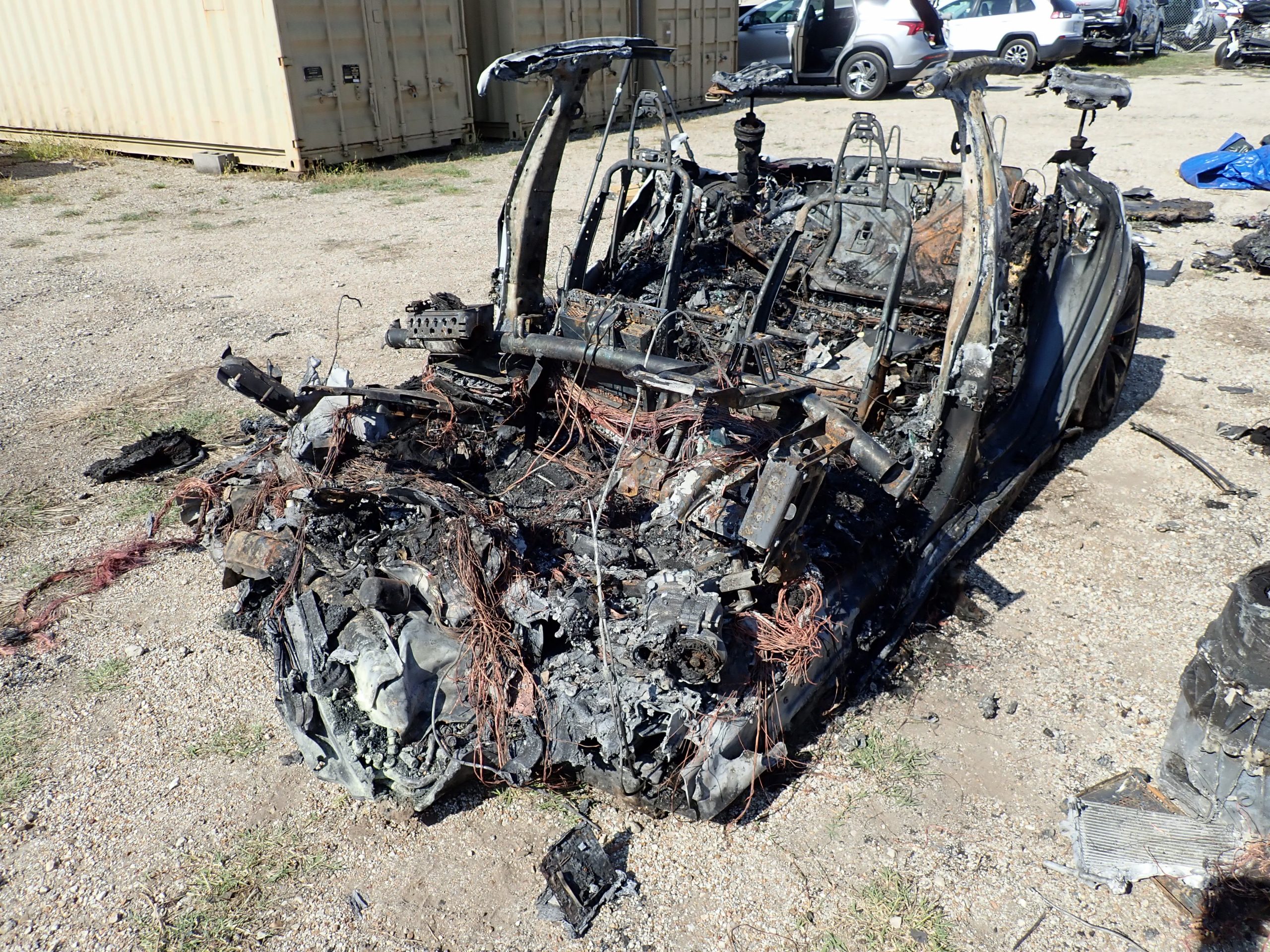

News
The Tesla Autopilot Excuse: How EV ignorance created the perfect storm for a misinformation nightmare
It was only a few hours after the accident and a bold statement was already making its rounds in the mainstream media. Another Tesla has crashed, and this time, it took the lives of two individuals from Texas. Facing inquiries from journalists eager for some clarity as to what happened in the tragic incident, Harris County Pct. 4 Constable Mark Herman shared a surprisingly confident and bold statement: there was no one in the ill-fated Model S’ driver seat when it crashed.
“They are 100% certain that no one was in the driver seat driving that vehicle at the time of impact. They are positive. And again, the height from the back seat to the front seat, that would be almost impossible, but again our investigators are trained. They handle collisions. Several of our folks are reconstructionists, but they feel very confident just with the positioning of the bodies after the impact that there was no one driving that vehicle,” Herman said, also noting that the electric car’s fire was out of control for four hours.
This statement, as well as the headlines that followed it, have since been proven false. And today, they stand as a remarkable case study on how misinformation spreads, and how the truth — even if it eventually emerges from legitimate sources — becomes largely ignored. This is the story of a Model S crash, rushed statements, and how general ignorance of electric vehicles could result in a massive misinformation nightmare.
But to get a complete view of this story, one has to go back to that fateful night on April 17, 2021, when two men, a 59-year-old Tesla owner and his 69-year-old passenger, crashed after traveling just about 550 feet, before departing the road on a curve, driving over a curb, hitting a drainage culvert and a raised manhole, and smashing into a tree. The vehicle was ablaze following its crash.

The Accident
As it is with other Tesla crashes, the Model S crash in Texas immediately caught the attention of national media. It did not take long before even foreign outlets were running with the story. It was during this initial wave of media attention that Constable Mark Herman noted that investigators were 100% sure that there was no one driving the car when it crashed. This statement was gold to numerous media outlets, with some like the New York Post posting a tweet noting that the ill-fated Tesla was on Autopilot. It’s pertinent to note that the Constable never mentioned Autopilot, though his statement declaring that there was no one in the driver’s seat seemed like a strong enough link to the driver-assist suite.
Soon, even organizations such as Consumer Reports joined the fray, graciously demonstrating that Autopilot could indeed be “fooled” into operating without a human in the driver’s seat. Consumer Reports‘ walkthrough was thorough, showing audiences exactly what needs to be done to defeat Autopilot’s safety measures. This stunt caught the eye of both national and international media as well, and by this time, the narrative was set: Teslas can drive themselves without a driver, and Autopilot could kill. It’s a chilling thought, but it is one that seemed to be casually supported by Ford CEO Jim Farley, who shared Consumer Reports‘ Autopilot defeat device walkthrough on his personal Twitter page.
This does not mean to say the narrative surrounding the fatal Model S crash in Texas was ironclad, however. Just days after the initial crash, Palmer Buck, fire chief for The Woodlands Township Fire Department, told the Houston Chronicle that contrary to some reports in the media, the ill-fated Model S was not ablaze for four hours. The fire chief also stated that firefighters did not call Tesla for help, and he was unaware of any hotlines for tips on how to control a battery fire.
Opinion: Consumer Reports’ Tesla Autopilot stunt crossed a line in an already-heated EV climate
The First Cracks — And A Persistent Misunderstanding
Interestingly enough, even Constable Herman himself seemed less sure about his information later on, noting in a statement to Reuters that his investigators were “almost 99.9% sure” that there was no one in the driver’s seat of the ill-fated car. This was despite Herman noting that they had executed a search warrant on Tesla to secure data about the tragic incident. Meanwhile, Elon Musk went on Twitter to state that data logs so far showed that the ill-fated vehicle was not on Autopilot when it crashed.
Tesla’s online community took it upon themselves to make sense of the situation, which seemed to have red flags all over the place. The Constable’s statements seemed premature at best, and reports about the vehicle’s fire had been proven false by the fire chief. Couple this with Elon Musk noting that Autopilot was not involved, and it was no surprise that the crash became a topic for analysis and conversations among Tesla supporters. These efforts, however, were largely dismissed if not mocked, with media outlets such as VICE stating that the behavior of the Tesla sleuths was akin to those who believe in conspiracy theories.
“Rather than waiting for the two different federal authorities investigating the crash to publish their findings, some Tesla owners are engaging in the classic behavior of conspiracy theorists and amateur internet sleuths in an apparent attempt to cast doubt on even the most basic facts surrounding the crash,” the publication noted.
More cracks about the initial “Autopilot crash” narrative emerged during the company’s Q1 2021 earnings call. Lars Moravy, Tesla’s vice president of vehicle engineering, stated that the company had conducted tests with investigators, and they have determined that Autosteer could not be engaged in the area. He also stated that judging by the distance of the vehicle from the owner’s home to the crash site, the Model S would have only accelerated to 30 mph before covering the entire 550-foot distance using Adaptive Cruise Control. This is undoubtedly a clarification about the incident, but like many things in this story, this was also misunderstood.
Not long after Tesla’s Q1 2021 earnings call, CBS published a piece titled “At Least One Tesla Autopilot Feature Was Active During Texas Crash That Killed 2.” It’s definitely a catchy headline and one that was sure to draw a decent amount of eyes. There was only one problem: the whole premise of the article was false. To add salt to the wound, Texas Rep. Kevin Brady shared the CBS piece on Twitter, noting that “Despite early claims by (Tesla and Elon Musk), Autopilot WAS engaged in (the) tragic crash in The Woodlands. We need answers.”
Despite early claims by #Tesla #ElonMusk, autopilot WAS engaged in tragic crash in The Woodlands.
We need answers. https://t.co/e3TQTRv72Z
— Kevin Brady (@RepKevinBrady) April 28, 2021
A Grassroots Movement
In a world where misinformation is prevalent from media outlets that may or may not be incentivized to publish reports that are completely accurate, citizen journalism has the potential to become the voice of reason. And in the case of the Tesla Texas crash, this was certainly the case. After conversations with sources, some of whom have opted to remain anonymous, Teslarati could surmise that it was the efforts of regular people, from electric vehicle advocates and space enthusiasts who were inspired by Elon Musk’s SpaceX, that may have ultimately helped get the right information about the incident to the right place.
Days after the incident, and a few weeks before the release of the National Transportation Safety Board (NTSB) preliminary report, @GoGundam1, a Texas-based SpaceX advocate, felt alarm bells in his head after Constable Herman declared confidently that he was 100% sure there was no one in the driver’s seat of the ill-fated Model S. Having been familiar with Elon Musk’s companies, the SpaceX enthusiast was also knowledgeable about Tesla and its products, which made the Constable’s statements seem disingenuous at best. Annoyed by the noticeably false narrative that was being formed, the space advocate sent out some feelers to test out the waters.
The story that emerged was quite remarkable. Information gathered by citizen informants suggested that by April 22, Constable Herman’s office was already in possession of video evidence that was in direct contradiction to the narrative that was initially presented to the media. It was a disturbing thought, but informants also suggested that the office of the Constable had intentions to sit on the information for as long as possible. Granted, these events may seem like they came from the plot of a semi-decent movie, but considering the relative silence from the Constable following his statements of a search warrant being submitted to Tesla, it does seem like the motivations for a follow-up report clarifying the incident were not really there.
Pertinent information about the Tesla Texas crash, no matter how valuable, would be next to useless if it did not catch the attention of the right entities. And thus, with the information gathered, the SpaceX enthusiast decided to reach out to members of the Tesla community for help. It was a challenging task, but eventually, @LordPente, a longtime Tesla advocate, decided to lend a hand. After numerous messages to other members of the Tesla community, the longtime EV advocate appeared to hit a breakthrough by (seemingly) reaching someone at Tesla. The SpaceX enthusiast, for his part, failed to get in touch with Tesla but was able to send a report to the NTSB, tipping off the agency about the additional video evidence in the Constable’s office.
During Teslarati’s conversation with the informant and the Tesla advocate, both noted that they were not really sure if their information reached the right entities. However, something happened not long after which suggested that it did.

The Lie Unravels
On May 10, 2021, the National Transportation Safety Board (NTSB) published its preliminary report about the Tesla Model S’ fatal Texas crash. As per the NTSB’s report, “footage from the owner’s home security camera shows the owner entering the car’s driver’s seat and the passenger entering the front passenger seat.” Apart from this, the NTSB also noted that tests of a similar vehicle at the crash location showed that Autopilot could not be engaged in the area, just as Tesla and the electric vehicle community suggested amidst the initial wave of “Autopilot crash” reports. The investigation is ongoing, of course, but based on what the NTSB has published so far, it appears that Autopilot has been absolved in the incident.
The findings presented in the NTSB’s report all but confirmed what Elon Musk and Tesla supporters were arguing online. It may be disappointing to media outlets like VICE, but as it turned out, the conspiracy theorist-like behavior exhibited by some Tesla sleuths online turned out to be justified. There really was misinformation being floated around, and if it wasn’t for the efforts of a few individuals, pertinent information about the incident might not have been submitted to Tesla or the NTSB on time.
Interestingly enough, Harris County Pct. 4 Constable Mark Herman has remained silent for now. Teslarati has attempted to reach out to his office through email but was unsuccessful. The Constable, at least for now, seems yet to issue a correction or retraction of his initial and now-debunked statements about the incident. Individuals such as Texas Rep. Kevin Brady have not admitted to making a mistake either.
How Misinformation Becomes Truth
Tesla, being a rather unorthodox company led by an equally unorthodox man, tends to fall victim to misinformation — lots and lots of it. The story of the Texas crash is a great example, but it is one drop in a whole bucket full of inaccurate reports about the company. Tesla CEO Elon Musk has seemingly thrown the towel with mainstream media coverage, reportedly abolishing Tesla’s PR department last year. This, of course, has pretty much opened the doors to even more misinformation — and to a point, even disinformation — which, in turn, becomes the general public’s truth.
For professional insights on how misinformation becomes accepted, Teslarati reached out to Stephen Benning, a Professor of Psychology at the University of Las Vegas. Professor Benning explained that humans tend to have an anchoring bias, in which the first information used to make a judgment influences it. While anchoring bias is typically considered in numerical judgments (like estimates on how much something is worth), it could also play out when people hear the first reports of what happened. This is most notable if the event were memorable, like a fatal Tesla crash. The initial information would likely stick on people’s minds and create an initial framework that sets their beliefs about an event.
“Because initial reports set people’s prior beliefs, additional information has to weigh against established beliefs. People might have additional biases at play, like the confirmation bias that filters out information that isn’t consistent with a previous set of beliefs. It’s as if people put up filters to help themselves maintain the consistency of their beliefs at the expense of their potential correspondence with reality. The initial crash reports were also likely more vivid than the drier details of the subsequent investigation, so the availability heuristic might make those initial reports more vivid and accessible in people’s memories when they think about the crash – even if they’ve followed the subsequent reports,” he wrote.
Tesla owner apologizes for staging “brake failure” incident in China
Emma Frances Bloomfield (Ph.D.), currently an Assistant Professor of Communication Studies at the University of Nevada, Las Vegas with an expertise in strategies for combatting misinformation, explained to Teslarati that ultimately, misinformation and disinformation travel very quickly because they tend to be compelling and engaging, all while confirming an audience’s biases. This made the Texas crash a perfect storm of sorts, as it had a compelling event that catered to biases against Tesla and its Autopilot system. Unfortunately, Assistant Professor Bloomfield also highlighted that once misinformation sets in, it takes a ton of effort to overturn.
“To address misinformation, people can create more complete stories that replace the incorrect one, provide trustworthy authority figures to deliver the message, and not repeat the false information when making the correction. You can also emphasize the importance of accurate information to make the best decisions moving forward and highlight how those changes might benefit the audience/consumer. We also say, ‘correct early and correct often’ to try and get ahead of the temporal advantage misinformation has and to counter the repetition of the false information,” she wrote.
A Battle That Tesla Doesn’t Need To Lose
If there is something highlighted by Professor Benning and Assistant Professor Bloomfield, it is that misinformation is hard to battle once it’s settled in. And for a lie to settle in, it has to be repeated. The Texas crash demonstrated this. It didn’t start with a lie, but it started with a premature, careless statement that could be easily twisted into one.
The Constable’s certainty that there was no one in the driver’s seat was premature at best, and reports about the incident being an Autopilot crash were also premature then, or a lie at worst. Reports about an uncontrollable blaze burning for four hours were false as well. Yet the narrative was so hammered down and unchallenged that even when the NTSB preliminary report came out, the needle barely moved.
Elon Musk’s reservations about maintaining a relationship with the media are understandable. Years of inaccurate reports tend to do that to a person. However, Tesla could also adopt a much more assertive anti-misinformation strategy. Tesla China has been doing this as of late, to great results. Anyone following the Tesla China story would know that the company was embroiled in a PR storm that involved alleged reports of “brake failure” incidents surrounding the company’s vehicles. But after an assertive legal campaign from Tesla China, media outlets have issued apologies for misreporting on the company and social media personalities have admitted to making up alleged incidents that painted the company’s vehicles in a negative light. Granted, such strategies may not be as effective in the United States, but something has to be done. What this something is remains up for question.
Do you have anything to share with the Teslarati Team? We’d love to hear from you, email us at tips@teslarati.com.

Elon Musk
Elon Musk’s X will start using a Tesla-like software update strategy
The initiative seems designed to accelerate updates to the social media platform, while maintaining maximum transparency.

Elon Musk’s social media platform X will adopt a Tesla-esque approach to software updates for its algorithm.
The initiative seems designed to accelerate updates to the social media platform, while maintaining maximum transparency.
X’s updates to its updates
As per Musk in a post on X, the social media company will be making a new algorithm to determine what organic and advertising posts are recommended to users. These updates would then be repeated every four weeks.
“We will make the new 𝕏 algorithm, including all code used to determine what organic and advertising posts are recommended to users, open source in 7 days. This will be repeated every 4 weeks, with comprehensive developer notes, to help you understand what changed,” Musk wrote in his post.
The initiative somewhat mirrors Tesla’s over-the-air update model, where vehicle software is regularly refined and pushed to users with detailed release notes. This should allow users to better understand the details of X’s every update and foster a healthy feedback loop for the social media platform.
xAI and X
X, formerly Twitter, has been acquired by Elon Musk’s artificial intelligence startup, xAI last year. Since then, xAI has seen a rapid rise in valuation. Following the company’s the company’s upsized $20 billion Series E funding round, estimates now suggest that xAI is worth tens about $230 to $235 billion. That’s several times larger than Tesla when Elon Musk received his controversial 2018 CEO Performance Award.
As per xAI, the Series E funding round attracted a diverse group of investors, including Valor Equity Partners, Stepstone Group, Fidelity Management & Research Company, Qatar Investment Authority, MGX, and Baron Capital Group, among others. Strategic partners NVIDIA and Cisco Investments also continued support for building the world’s largest GPU clusters.
News
Tesla FSD Supervised wins MotorTrend’s Best Driver Assistance Award
The decision marks a notable reversal for the publication from prior years, with judges citing major real-world improvements that pushed Tesla’s latest FSD software ahead of every competing ADAS system.

Tesla’s Full Self-Driving (Supervised) system has been named the best driver-assistance technology on the market, earning top honors at the 2026 MotorTrend Best Tech Awards.
The decision marks a notable reversal for the publication from prior years, with judges citing major real-world improvements that pushed Tesla’s latest FSD software ahead of every competing ADAS system. And it wasn’t even close.
MotorTrend reverses course
MotorTrend awarded Tesla FSD (Supervised) its 2026 Best Tech Driver Assistance title after extensive testing of the latest v14 software. The publication acknowledged that it had previously criticized earlier versions of FSD for erratic behavior and near-miss incidents, ultimately favoring rivals such as GM’s Super Cruise in earlier evaluations.
According to MotorTrend, the newest iteration of FSD resolved many of those shortcomings. Testers said v14 showed far smoother behavior in complex urban scenarios, including unprotected left turns, traffic circles, emergency vehicles, and dense city streets. While the system still requires constant driver supervision, judges concluded that no other advanced driver-assistance system currently matches its breadth of capability.
Unlike rival systems that rely on combinations of cameras, radar, lidar, and mapped highways, Tesla’s FSD operates using a camera-only approach and is capable of driving on city streets, rural roads, and freeways. MotorTrend stated that pure utility, the ability to handle nearly all road types, ultimately separated FSD from competitors like Ford BlueCruise, GM Super Cruise, and BMW’s Highway Assistant.
High cost and high capability
MotorTrend also addressed FSD’s pricing, which remains significantly higher than rival systems. Tesla currently charges $8,000 for a one-time purchase or $99 per month for a subscription, compared with far lower upfront and subscription costs from other automakers. The publication noted that the premium is justified given FSD’s unmatched scope and continuous software evolution.
Safety remained a central focus of the evaluation. While testers reported collision-free operation over thousands of miles, they noted ongoing concerns around FSD’s configurable driving modes, including options that allow aggressive driving and speeds beyond posted limits. MotorTrend emphasized that, like all Level 2 systems, FSD still depends on a fully attentive human driver at all times.
Despite those caveats, the publication concluded that Tesla’s rapid software progress fundamentally reshaped the competitive landscape. For drivers seeking the most capable hands-on driver-assistance system available today, MotorTrend concluded Tesla FSD (Supervised) now stands alone at the top.
News
Elon Musk’s Grokipedia surges to 5.6M articles, almost 79% of English Wikipedia
The explosive growth marks a major milestone for the AI-powered online encyclopedia, which was launched by Elon Musk’s xAI just months ago.

Elon Musk’s Grokipedia has grown to an impressive 5,615,201 articles as of today, closing in on 79% of the English Wikipedia’s current total of 7,119,376 articles.
The explosive growth marks a major milestone for the AI-powered online encyclopedia, which was launched by Elon Musk’s xAI just months ago. Needless to say, it would only be a matter of time before Grokipedia exceeds English Wikipedia in sheer volume.
Grokipedia’s rapid growth
xAI’s vision for Grokipedia emphasizes neutrality, while Grok’s reasoning capabilities allow for fast drafting and fact-checking. When Elon Musk announced the initiative in late September 2025, he noted that Grokipedia would be an improvement to Wikipedia because it would be designed to avoid bias.
At the time, Musk noted that Grokipedia “is a necessary step towards the xAI goal of understanding the Universe.”
Grokipedia was launched in late October, and while xAI was careful to list it only as Version 0.1 at the time, the online encyclopedia immediately earned praise. Wikipedia co-founder Larry Sanger highlighted the project’s innovative approach, noting how it leverages AI to fill knowledge gaps and enable rapid updates. Netizens also observed how Grokipedia tends to present articles in a more objective manner compared to Wikipedia, which is edited by humans.
Elon Musk’s ambitious plans
With 5,615,201 total articles, Grokipedia has now grown to almost 79% of English Wikipedia’s article base. This is incredibly quick, though Grokipedia remains text-only for now. xAI, for its part, has now updated the online encyclopedia’s iteration to v0.2.
Elon Musk has shared bold ideas for Grokipedia, including sending a record of the entire knowledge base to space as part of xAI’s mission to preserve and expand human understanding. At some point, Musk stated that Grokipedia will be renamed to Encyclopedia Galactica, and it will be sent to the cosmos.
“When Grokipedia is good enough (long way to go), we will change the name to Encyclopedia Galactica. It will be an open source distillation of all knowledge, including audio, images and video. Join xAI to help build the sci-fi version of the Library of Alexandria!” Musk wrote, adding in a later post that “Copies will be etched in stone and sent to the Moon, Mars and beyond. This time, it will not be lost.”








